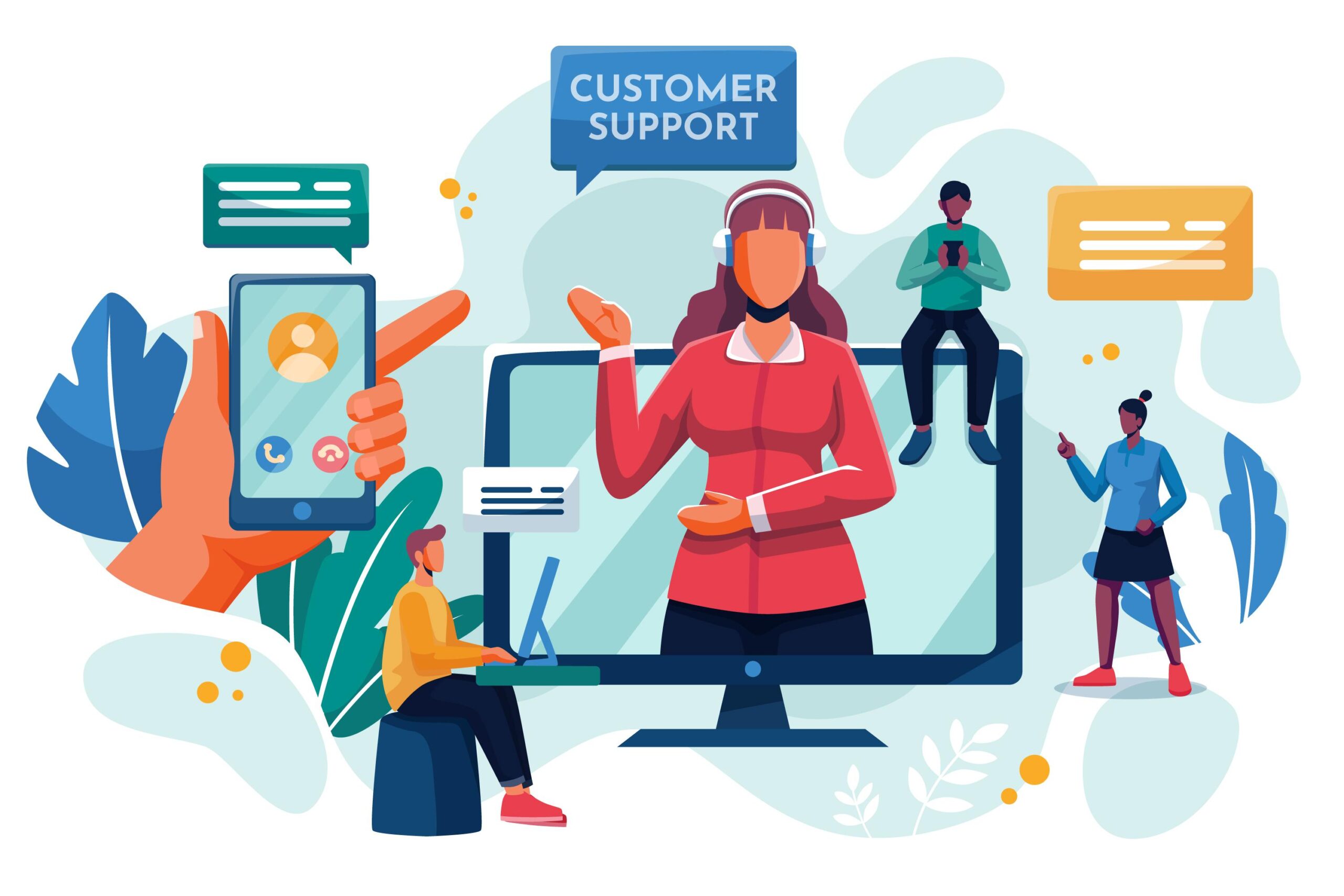What does the ideal helpdesk and ticketing system look like?
Surely, the purpose of a helpdesk is not to record and track complaints. A CTO never thinks of technology in terms of features and surely, helpdesks have more to do. They’re the road network that problems use to reach their resolution.
But here’s the kicker: not all helpdesk tools are alike. Some are like 16-lane expressways, while others are like backcountry roads dotted with potholes. As we said, a ticketing system isn’t just a place to log issues, route them, and churn out reports. Done right, a helpdesk can achieve more – yet not many realize this.
The right KPIs for ticketing tools should be more than tickets solved, satisfaction rating, and MoM resolution rates. Ticket tools should be expected to achieve more. They should enhance customer loyalty, improve resolution times, and drive service innovation.
Most ticketing products, however, are a one-size-fits-all system. This can stifle innovation, lead to a poor fit for specific use cases, and often result in a clunky experience for both customers and service agents. That’s why CTOs are so keen on flexible, low-code ticketing systems. They understand you can’t just pile on features and add-ons onto a traditional ticketing system and expect it to work wonders. It’s like forcing a square peg through a round hole – a futile effort.
Low-code platforms are made for the modern business – where agility is the core of IT. Particularly in a landscape shaped by remote work, and where stress levels of IT support workers are very high, a CTO has all the more reason to go for Low-Code.
The low-code market is still in its infancy, but growing fast
 Low-code development platform market revenue worldwide from 2018 to 2025(in billion U.S. dollars)
Low-code development platform market revenue worldwide from 2018 to 2025(in billion U.S. dollars)
So let’s understand the low-code helpdesk and ticketing system in more detail.
What Is a Low-Code Helpdesk and Ticketing System?
Low-code strips back the complexity of software. It’s a way to build applications with fewer lines of code and more user-friendly interfaces.
CTOs looking to implement a ticketing system usually have two choices:
1. Build from Scratch
This means creating a custom ticketing system with a lot of coding from the ground up.
Downsides: Takes a lot of time and money. Such systems can be too rigid, making them a poor fit for businesses with unique needs. They might not keep up with the latest needs for mobile access or provide the deep insights from data that businesses need to stay ahead.
2. Buy Off the Shelf
The other option is to purchase a pre-made ticketing system that’s ready to use.
Downsides: These can be inflexible, forcing businesses to work the way the system works. Integration with existing tools and workflows can be a headache.
Now, Low-Code comes in as the hero. It offers the best of both worlds.
Here’s How Low-Code Works
The low-code approach is based on abstracting the building blocks of software as much as possible. This gives users the levers they need to tweak and tune the application to their liking.
Let’s understand these levers.
- Visual Builders – Low-code platforms let you drag and drop pieces to build your system without writing code.
- Templates and Widgets – These are ready-to-use elements that you can mix and match to make the system do what you want.
- Easy Integrations – Low-code platforms play well with others, meaning they connect smoothly to different.
Low-code ticks all the boxes. It’s quick and budget-friendly like off-the-shelf solutions, but also flexible and tailor-made like custom-built systems. This way, CTOs can provide a ticketing system that grows with the business and adapts in real time.
The benefits are irresistible. Let’s take a look.
The Benefits Of A Low-Code Helpdesk Management and Ticketing System
The right helpdesk management and ticketing system is the difference between ops hell and heaven. Let’s see how a low-code system works so well.
1. Quick and Cheap
Why wait months when you can start today? Low-code platforms let you build applications 10X faster than the traditional high-code approach. Yes, 10X sounds like a lofty claim, but we’re being very realistic here. That’s not all, low-code platforms will cost you 1/4th of applications made through traditional software development. This means you can design, build, and deploy ticketing apps rapidly, without breaking the bank. This is literally the difference between months and days, and dollars and pennies.
Example: Imagine rolling out a custom feature that auto-assigns tickets to agents based on expertise — all in a matter of days, not months.
2. Empowered Users
Business users should be able to tweak the system to suit their work, without always calling IT. Low-Code puts the power in the hands of those who use the system daily. This reduces the IT bottleneck.
Example: An account executive, with no coding skills, could modify a ticketing form to capture new customer data points crucial for targeted follow-ups.
3. Improved Integration
A low-code ticketing system can seamlessly connect with your existing help desk, knowledge base, and customer portals, ensuring a unified customer service experience.
Example: Link your ticketing system to the company knowledge base, allowing agents to pull information and solve queries faster than ever.
4. Enhanced Communication
Why let communication gaps slow you down? Low-Code helps streamline ticket resolution by improving the flow of information between teams.
Example: Create a shared dashboard that updates in real-time, so everyone from support to sales is on the same page with customer issues.
5. Data-Driven Insights
Are you making the most of your data? With low code, you can harness ticketing trends and analytics to boost efficiency and sharpen your customer service edge.
Example: Generate a report identifying common service bottlenecks, and use it to refine your support strategy for quicker resolutions.
What Amoga’s Low-Code Helpdesk and Ticketing System Offers
First a word of caution — The market’s full of so-called “low-code” tools that are nothing more than old, hard-coded systems dressed up with a few extra controls. These systems create the illusion of customization and control; don’t be fooled.
At Amoga, we step away from these marketing games. We’re here to offer true low-code and let the results speak for themselves. After all, businesses need technology that’s fast, affordable, and transformative. That’s the heart of low-code. With Amoga’s low-code helpdesk and ticketing system, you can picture a system built with the singular goal of empowering every user.
Here are the top features of Amoga’s system, crafted to bring you real benefits:
1. Omni-Channel Ticketing
Why miss out on a customer’s voice just because it’s not on the right channel? Capture tickets from email, social media, phone calls, and chat all in one place. That’s what our unified inbox does — it ensures no customer query slips through the cracks.
2. SLA and Escalations
What happens when a ticket risks going overdue? Our system takes charge. It escalates the ticket to make sure someone attends to it promptly. It’s like having a vigilant watchkeeper for your customer service standards.
3. Queue Management Prioritize
Tailor urgency levels and keep tabs on your customers’ details — from purchase history to contact info. This is like crafting a narrative around each customer.
4. Mobile App
Agents on the move? No problem. They can resolve queries right from their phones, access contacts in a snap, and stay updated with push notifications. Even when offline, the app syncs up once they’re back online.
5. Geo Location/Geo-Fencing
Location, location, location — it’s not just for real estate. Set virtual boundaries and let your agents receive tasks triggered by where they are. It’s about getting smarter with field service and giving customers the attention they need, where they need it.
6. Automation and Analytics
Why guess when you can know? Monitor customer satisfaction, and see where your service shines, and where it needs polish. Our analytics give you actionable insights to keep boosting your customer service game. With Amoga’s low-code system, you’re adopting a platform that evolves with you. That’s the first step for turning the lofty goal of exceptional customer service into a daily reality.
Don’t trust words, trust results
There’s a lot more under the hood of Amoga’s low-code ticketing system. What stands out is the flexibility. It’s a system that fits just right for your business, regardless of your unique needs.
If you’re curious about how this all works, why not talk to us? We offer a free consultation so you can understand the difference Amoga can make.
You’ll get a real sense of how we can:
- Speed up your response times, making customers happier.
- Improve the way you connect with customers, no matter where they reach out from.
- Give you useful insights to make your support even better.
It’s not just about what we say; it’s about what you’ll experience. Give Amoga a go and see how it can change the game for your customer support team. Let’s get started!



